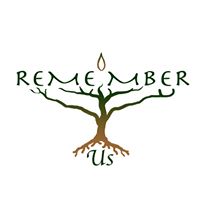
Written and narrated by Peter Bejger.
The revelation came in California.
“We went to one of the redwood parks. I was looking at redwood trees, sequoia trees, and I saw them and I remember just thinking about how much those trees have seen. If only they could talk. I started to think a thousand years back. What have they seen? That’s when the idea of planting and creating memorials came to mind.”
That is Julia Korsunsky, the Executive Director of Remember Us.org.
RememberUs.org is a public charity in Massachusetts. Their mission is to educate the public about the devastating consequence of genocide, to honor and commemorate those who perished in the Holocaust, and to promote peaceful coexistence, inclusiveness, and cross-cultural interactions.
Auschwitz and other concentration camps have become notorious global symbols of Nazi atrocities. But during the Second World War in Ukraine Jews were most often placed in front of firing squads and massacred.
RememberUs.org has launched what is called the MARS Program to maintain, aid, restore, and support commemorative events at the mass killing sites.
Originally started as a family project, RememberUs.org has grown into an active and far-reaching group of volunteers. And they run multiple educational activities both in the U.S. and in Ukraine.
They have organized commemorative programs in multiple locations in Ukraine such as Kharkiv, Lubny, and Kremenchuh. Their volunteers organize daily field trips for schools. The organization funds the creation of school museums, supports genocide related research, and documents individual stories.
And of course, RememberUs.org plants trees.
The metasequoia tree is an inspiring botanical story of rebirth and survival. The trees were thought to be extinct. But a small plantation was found in China and the trees have been cultivated and brought back to life all over the world. The trees are hardy survivors that can withstand harsh weather, fires, and lightning. And they can live for hundreds of years. They are one of the oldest living species on Earth.
RememberUs.org believes planting metasequoia trees at killing sites is as close as we can get to commemorating victims of genocide for eternity. And the story of the rebirth of these trees has symbolic parallels to events in Jewish history. Trees have been planted at Babyn Yar, at Drobytsky Yar outside Kharkiv, and Lubny.
Julia Korsunsky has a very powerful personal connection with Drobytsky Yar. Julia was born in Kharkiv but left during the wave of Jewish emigration during the Soviet era. She returned to her place of birth many years later with her daughter and visited the memorial at Drobytsky Yar, a ravine where some sixteen thousand people, mainly Jews were, killed from late 1941 into 1942. Her grandfather’s parents, his brother, and his children were murdered there.
“It’s very hard to see your name…I knew as a child that we had this tragedy in our family.
“It’s completely different when you’re standing there and you know that your family is somewhere under your feet. And you go in the room and you read names of your relatives. This is the emotional part of it. I never even thought that it would be so overpowering.”
This visit to Drobytsky Yar fundamentally altered Julia’s life path.
“I have changed a lot I think. My priorities have changed. I met so many good people who share my values and share my thoughts.
“It is impressive that so many people think that it is important to keep the memory alive. And it is very important that so many kids think that it is important to keep memory alive and want to learn and want to educate others.”
RememberUs.org is keeping the memory alive by continually expanding their activities. More tree plantings are planned in Fastiv, Myrhorod, and Kremenchuh. A multiple social media series and an Inspiring Speakers series are active in the U.S. School museums have been set up in Lubny and Kremenchuh and more museums and exhibits are planned in Ukraine as resources permit.
Other new initiatives include “forgotten shtetl” trips. The goals here are educational, to show how Ukraine looked before. To show how Jews and Ukrainians lived together for many many generations. And how this part of tradition, how this part of life, completely disappeared.
“What’s interesting, and to me, it’s very…it’s touching, it’s very warm and heartwarming, that…the majority of people that we work with, the majority of partners, are not Jews. So, I lived in that country…that’s not the atmosphere that was there thirty years ago, when I left that Ukraine…when I left the Soviet Union, right? But, it is very interesting how things changed and it’s very nice to see that the new generation grew up in a totally different environment.”
For more information about RememberUs.org, visit their website RememberUs.org.
This has been Ukrainian Jewish Heritage on Nash Holos Ukrainian Roots Radio. From San Francisco, I’m Peter Bejger. Until next time, shalom!


One thought on “Ukrainian Jewish Heritage: Planting trees at Holocaust killing sites to commemorate victims of genocide”